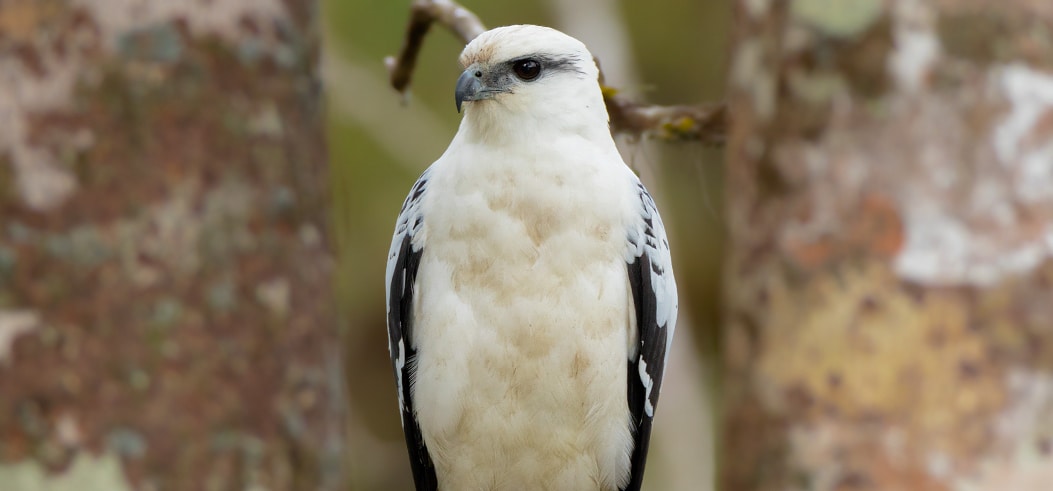White Hawk
Pseudastur albicollis
This large, forest-dwelling hawk is a beautiful sight, whether perched or soaring—its striking white plumage is like no other raptor throughout the Neotropics. It is white overall including its back, with varying amounts of black in the wings. The White Hawk is further distinguished by a black subterminal band on its fairly short tail, a gray cere and yellow feet. Males and females are similar, only varying in size—as in other raptors, females are larger than males. They have very broad, rounded wings and a wingspan of over 1 meter. Immature birds are similar to adults but have dark spotting above and streaking below.
The White Hawk is a widespread raptor of the Neotropical forests. It is generally solitary, and can be found in the middle and upper levels of tropical rainforests and along forest borders in the lowlands up to 1200 meters. It also soars frequently, and when soaring often gives a harsh, high-pitched call, heee-ahhh, similar to the sound of a squealing pig or the screech of a Barn Owl. By sight and sound it is generally more conspicuous than other forest raptors. The White Hawk feeds primarily on reptiles, mainly snakes, but also captures frogs and lizards, insects, birds (toucans, owls, manakins and wrens are known avian prey) and mammals. The White Hawk is known to associate with groups of foraging capuchin monkeys and coatis, in hopes of snatching up lizards, snakes and insects disturbed by the mammals.
In Panama, nesting begins in March. The pair builds a platform stick nest high in a tall canopy tree in the forest, where the female lays only one egg. Nests are occasionally placed on bromeliads. The egg is incubated for 34-36 days, and like other large raptors, the young have a long dependency period on the adults, and fledge at around 88 days old. Due to this long dependency of the juvenile, the Pseudastur albicollis only breeds every other year.
There is considerable geographic variation in this species—four subspecies are recognized. The general trend is that birds in the northern part of the range (Mexico, Belize, Honduras, subspecies P. a. ghiesbreghti) are very white, and plumage gradually darkens toward the south into South America, with Amazonian birds (subspecies P. a. albicollis) being the darkest, with black on the back and shoulders. In Panama, subspecies P. a. costaricensis has some black on the wing coverts, and the black tail band is wider than birds to the north.
The White Hawk ranges from southern Mexico to Bolivia, and is also found in central Brazil and the Guianas. Pseudastur albicollis is fairly common in Panama; keep an eye out for this beautiful raptor around all the Canopy Family lodges.

